During the week-long span from Sunday, February 16, to Saturday, February 22, I recorded all of the media that I consumed in a “media diary.” The way I defined media was anything that portrayed information or entertainment to me through a screen, text, or audio source. Note that I did not include in-person interactions as media so long as they were free from the use of technology to enhance the conversation/interaction. This exercise taught me quite a bit about my personal habits and what I might do to be in better control of those habits. While it is nice to not need to write everything I see/hear, I am grateful for the added layer of thought I have added to my subconscious when I am consuming media of any variety.
In my media diary, I simply wrote five things that defined each entry: 1) the date I consumed the media, 2) the title of the media I was consuming, 3) the general medium through which I was consuming the media, 4) how much time I had spent consuming the media, and 5) how deliberate I was in seeking out that particular piece of media. Again, just by writing these things down, I became more aware of how often I might “waste time” doing things that aren’t immediately important when I could be spending my time on other priorities.
In order to get a better sense of what this data looked like, I decided to focus in on three main points to visualize: what general purpose the media held at the time of consumption, how much time I was spending consuming that media, and how deliberate I was in seeking that media out. I chose to visualize this data using a simple particle simulator (adapted from an idea that I had to implement in another class). As you will see below, each individual particle is a single entry of media that was consumed. Three variables in the particles symbolize the three parameters I was focusing on, and they are as follows:
Category (color): I whittled down my media consumption into four categories–recreation (red), spiritual (yellow), productivity (green), and family/social (blue). Starting from the end and going backwards, family/social signifies any consumption of media that I used to communicate with my friends and family, such as phone calls, video chats, and text messaging; productivity means anything that was used to accomplish tasks necessary for classwork, research, and general future career needs through email, presentations, online textbooks, etc.; spiritual is for any religious media that I consumed that goes toward helping me be a better person and building my faith, such as reading scriptures, listening to talks and lessons at church, and so forth; recreation is for anything else that doesn’t fit into one of the other three categories, including YouTube videos about my hobbies, playing video games, watching movies or sporting events, etc. I could have done just two categories or added even more, but these four categories paint a fairly full story.
Duration (size): the bigger the particle, the longer I spent involved in a particular activity. Among the longer-lasting forms of media were movies, sporting events, and classes. The smaller ones include checking emails, using social media out of boredom, and so forth.
Deliberateness (speed): the speed of the particle is inversely proportional to how deliberate I was in consuming a particular piece of media. Namely, the slower the particle, the more steady and deliberate I was in choosing to consume that exact piece of media, and the faster the particle, the more spontaneous and distracting a piece of media was, almost thrust upon me, whether by an algorithm or by my two-year-old daughter.
So, without further ado, here is my week visualized:
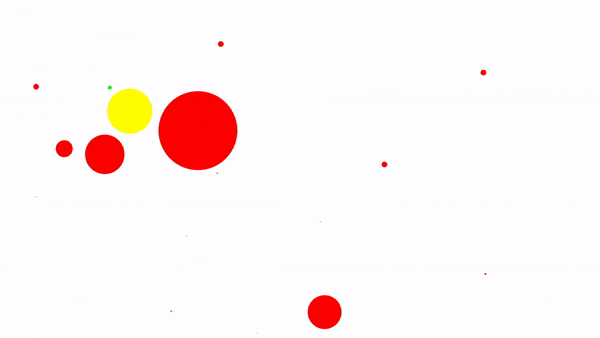
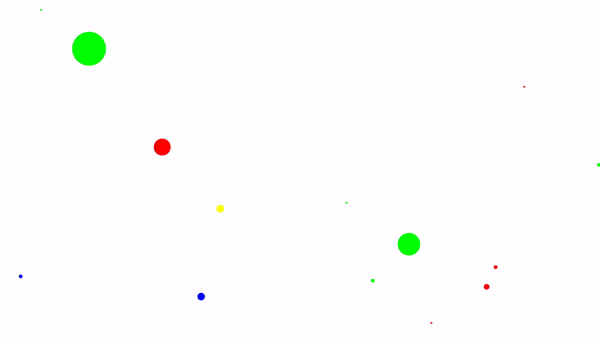
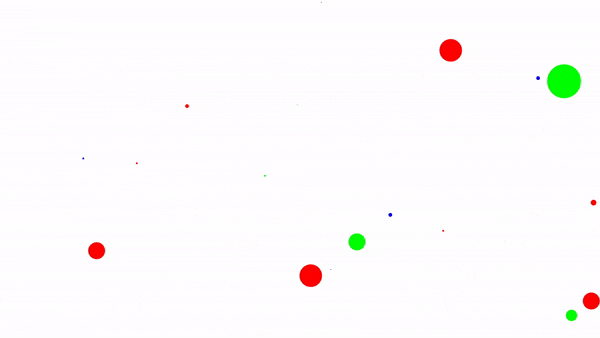

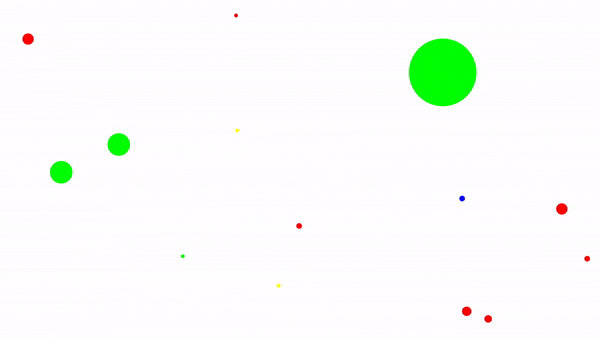
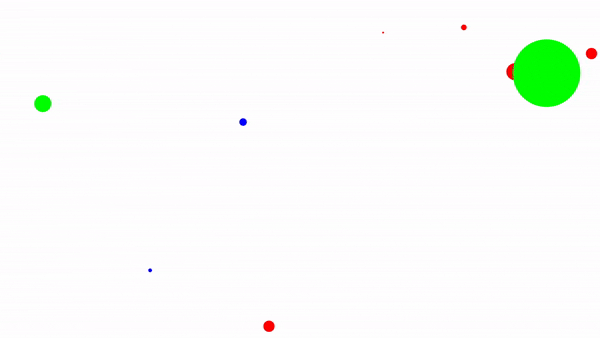
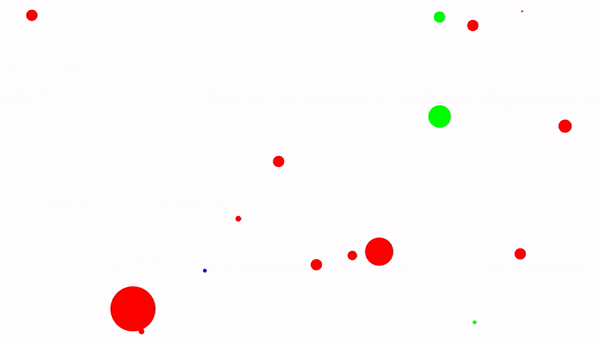

The full week combined: Classes, church, movies, and sporting events are the bigger particles, while checking social media and emails, as well as reading random articles here and there are the smaller ones.
As you can see from the data above, there tends to be a majority of recreation-centered media consumption in my life. Perhaps it’s due to how exactly I defined media, but it’s still quite apparent that I use a lot of media to entertain myself. That being said, I do use media for a lot of productive things. It’s ingrained into the classes I take, doing my homework, setting up meetings with people, and many more things.
The biggest takeaways from this data for me, though, is that the bigger items are typically slower than the smaller items. I’m spending a majority of my time really focused on specific tasks that I have personally decided to enact. While there are several little distractions throughout the day, they don’t completely dominate my time. Adding them all up definitely would show quite a bit of time taken away, though, so I want to be better at eliminating that usage, especially when it’s something not very important.
Overall, seeing this data has helped me to understand my media usage and habits better, and with that better understanding, gives me some ideas on how to better set expectations and boundaries for myself to be more in control of what I do each day. And for that added insight, I’m very grateful for the experience. But I’m sure glad I don’t have to write everything I do down in my little notebook. I found myself not wanting to give in to every impulse because I didn’t want to write it down. That’s honestly not the worst thing, though…